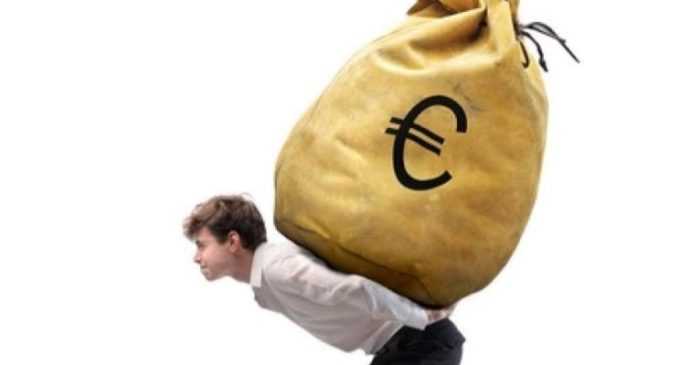
How to capture the difference between the rates
By Guy Avtalyon
In this post, I’m gonna explain what is carry trade, how to trade this strategy, how to use it in Forex trading.
Niels Bohr, the famous Danish physicist, once joked that “prediction is very difficult, especially about the future.” No words could better express the difficulties associated with exchange rate forecasting. As anyone involved in the business of currency forecasting can attest, it can be a humbling experience.
‘Having endeavored to forecast exchange rates for more than half a century, I have understandably developed significant humility about my ability in this area.’ said Alan Greenspan, former U.S. Federal Reserve chairman. Some may think writing about the fortunes of the stock market is tricky, but try to observe currencies. That’s the challenge.
What is a carry trade strategy
A carry trade is a trading strategy in which a trader borrows money at a low -interest rate to trade the asset that is possible to generate a higher return. This strategy is very popular in forex trading.
This strategy counts on relative stability in asset prices. You know how an unfavorable exchange rate movement can easily wipe out the returns from the difference in the underlying interest rate.
This motivates some people to describe the carry trade as similar to picking up pennies in front of a fast-moving car.
What is the goal of the carry trade
The goal of this strategy is to make a profit from the interest rate differential. Sometimes that difference can be large. So adding leverage can literally tremendously multiply profits.
In currency trading, a carry trade is a strategy in which a low-yielding currency (one with a low-interest rate) is sold. And the funds raised are using to purchase a high-yielding currency. The purpose of this type of trade is to profit on the interest rate differential of the two currencies. In this strategy, traders use leverage to dramatically increase the profits earned through the carry trades.
Up to 2007 many traders borrowed in Japanese yen or Swiss francs. They were actually taking advantage of very low-interest rates in Japan and Switzerland and used the borrowed money to take long positions in other currencies that were backed by high-interest rates. For example, the Australian and New Zealand dollars and South African Rand were that currencies.
BTW, Japan has kept low-interest rates for quite a long time now. Australia and New Zealand have one of the highest interest rates in the developed world! In 2011 interest rates in Australia were as high as 4.5 percent!
Economists theories
Economists have developed a wide range of theories to explain how exchange rates are determined. Most studies conclude that for short- and medium-term horizons, up to perhaps a few years, a random walk characterizes exchange rate movements. But still better than most fundamentals-based exchange rate models. That studies find that models that work well in one period fail in others. They also find that models that work for one set of exchange rates fail to work for others.
A strategy that has attracted a lot of interest among international investors is the so-called foreign exchange (FX) carry trade.
FX carry trades entail going long a basket of high- yielding currencies and simultaneously going short a basket of low-yielding currencies. The empirical evidence suggests that the excess returns on this strategy have been fairly attractive.
Yet, investors need to be mindful that carry trades are prone to crash when market conditions become volatile. Hence, investors need to overlay simple carry trade strategies with well- thought- out risk management systems to help protect against downside risks.
How does a carry trade work in Forex?
Let’s assume that you went long on AUDJPY and kept the position open overnight until the next day. Basically you are buying AUD and selling JPY.
What happens the next day is that your forex broker will either debit or credit you the overnight interest rate differential between the two currencies. This rolling over of your current position is the carry trade.
Say, if the interest rate earned on AUD is 4.00% and JPY is 0.10%. Your profit from the interest rate differential is 3.9% per year! This is considered a positive carry trade. But there is also s negative carry trade. It happens when you, for example, buy JPY and sell AUD. So, you could end up with a negative interest rate differential.
This example is based on 1:1 leverage and assumes exchange rates remain constant for the whole year. Try to imagine applying leverage.
In the example above, if you had the leverage of 100:1, your return would now be 100 x 3.9% = 390% on just the interest rate differential!
When are carry trades successful?
We are still on the example of AUDJPY. If the central bank in Australia were to raise interest rates, then you would make even more gains. Therefore, you have to be mindful of the economic conditions in Australia. If the Reserve Bank of Australia is optimistic about the economy, then they will likely raise rates.
But, if the economy is slow and the RBA believes it needs to lower rates to stimulate the economy, then the AUDJPY as a carry trade would not be that successful. Meanwhile, if the AUDJPY exchange rate moved higher, in addition to higher interest rates, your long position on the pair would gain even more!
What is a Law of one price in a carry trading
The principle of “uncovered interest rate parity” states that the exchange rate of any two currencies should adjust in a way to exclude any chance of making a profit from an interest rate differential.
Furthermore, the Law of One Price states that the real carry cost of an asset should be the same in each country, meaning doesn’t matter from where you’re trading forex.
Carry trades can be greatly tough. Because the FX element of a cross-currency carry trade requires selling the low-interest-rate currency. But also, buying the high-interest-rate currency. In the core of the carry is the intention to make the exchange rate of the low-interest-rate currency fall relative to the other. If carry trades are enough large in volume they can remove any trend for exchange rates to equalize. That is exactly what generates profits in the longer run.
This directs us to believe that carry trades work best when risk aversion is low and investors are willing to invest in high yielding (risk) currencies.
You might be interested to find Leading Stock Exchanges In The World



Leave a Reply